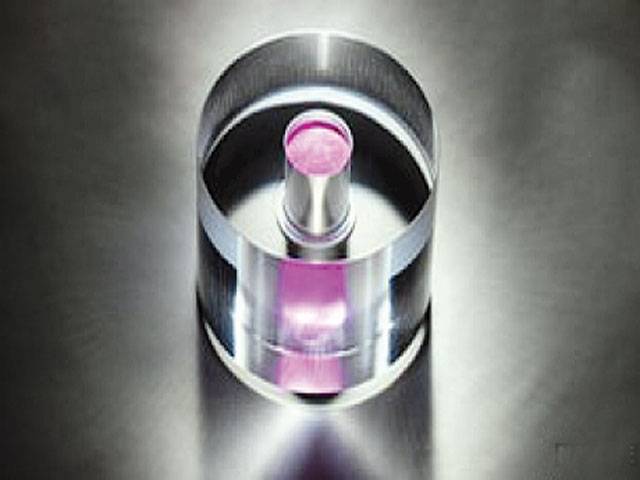RESEARCHERS have shown off a microwave-emitting version of the laser, called a maser, that works at room temperature.
Masers were invented before the laser, but have languished in obscurity because they required high magnetic fields and difficult cooling schemes. A report in Nature outlines a far simpler version using a crystalline material and no cooling or magnets.
The resulting intense microwave beams could be used in applications ranging from medical diagnostics to astronomy. Masers were borne of an idea first postulated by Albert Einstein: that in some materials, energy could be pumped in and concentrated into a beam of electromagnetic waves oscillating in synchrony.
The first maser - an acronym of microwave amplification by stimulated emission of radiation - was built in 1953, and later masers were used, for example, in the first transatlantic television broadcast. But researchers carried the work on, coaxing materials to amplify visible light instead of microwaves, earning three of them the 1964 Nobel prize in physics.
These “lasers” reached complete ubiquity as simple designs for them were perfected and applications for them proliferated.
However, the relative complexity of masers has relegated them to niche applications. Masers remain in use - in a form much like those of the early prototypes - in applications such as atomic clocks and as the amplifiers for the minuscule communication signals coming from space probes.
Now researchers at the National Physical Laboratory (NPL) and Imperial College London in the UK have completely revamped the way “masing” is done, by carrying it out in a crystal of material called p-terphenyl that is infiltrated by chains of five-sided molecules called pentacene. Their radically new design uses yellow light from a commercially available medical laser to “pump” energy in, producing synchronised microwaves at room temperature and in air, with no need for strong magnets or complex cooling and vacuum schemes.
Mark Oxborrow of NPL, lead author of the paper, called the design “a new type of electronic device” whose applications may, like the laser itself, stretch far beyond those imaginable in these early days. –BBC
The key value of masers lies not in their ability to produce a useful beam as lasers do, but to carry out the amplification process in a particularly clean way, without adding much noise.
That is why they are used to detect the tiny signals coming from space missions as distant as the Voyager probes, billions of kilometres away.
Microwaves pass through many materials that light cannot, such as clouds and skin, meaning that beyond telecommunications and space applications, maser-enabled systems could outperform medical diagnostics or detectors for explosives.
“Perhaps the one application that is most relevant is more sensitive forms of body scanners,” Dr Oxborrow told BBC News. “Sensitivity matters with body scanners, because detecting a tumour before it metastasizes is so useful.
“If this device can make even just a slightly more sensitive body scanner, it could put smiles on people’s faces - they’ll still be around to smile.”
Or, Dr Oxborrow said, they could be put to use amplifying far more distant signals.
“Let’s dream here: you could make a radio telescope that was very low-noise, 100 times more sensitive than the best at the moment... this type of maser could be used to detect some extraterrestrial intelligence that hasn’t been detected.”
Tuesday, April 16, 2024
Cousin of laser is a hot prospect

Pakistan, IMF discussing new multi-billion-dollar program, says Finance Minister Aurangzeb
11:09 AM | April 16, 2024
LESCO ‘bars’ officers from appearing before FIA in overbilling probe
10:49 AM | April 16, 2024
Aleem Khan, Kamran Tessori discuss matters of mutual interests
10:40 AM | April 16, 2024
Global brands facing challenge from local contenders in Pakistan's FMCG market
10:24 AM | April 16, 2024
Israeli Air Force finalizes preparations for possible attack on Iran
8:21 AM | April 16, 2024
Political Reconciliation
April 16, 2024
Pricing Pressures
April 16, 2024
Western Hypocrisy
April 16, 2024
Policing Reforms
April 15, 2024
Storm Safety
April 15, 2024
Democratic harmony
April 16, 2024
Digital dilemma
April 16, 2024
Classroom crisis
April 16, 2024
Bridging gaps
April 16, 2024
Suicide awareness
April 15, 2024
ePaper - Nawaiwaqt
Advertisement
Nawaiwaqt Group | Copyright © 2024





